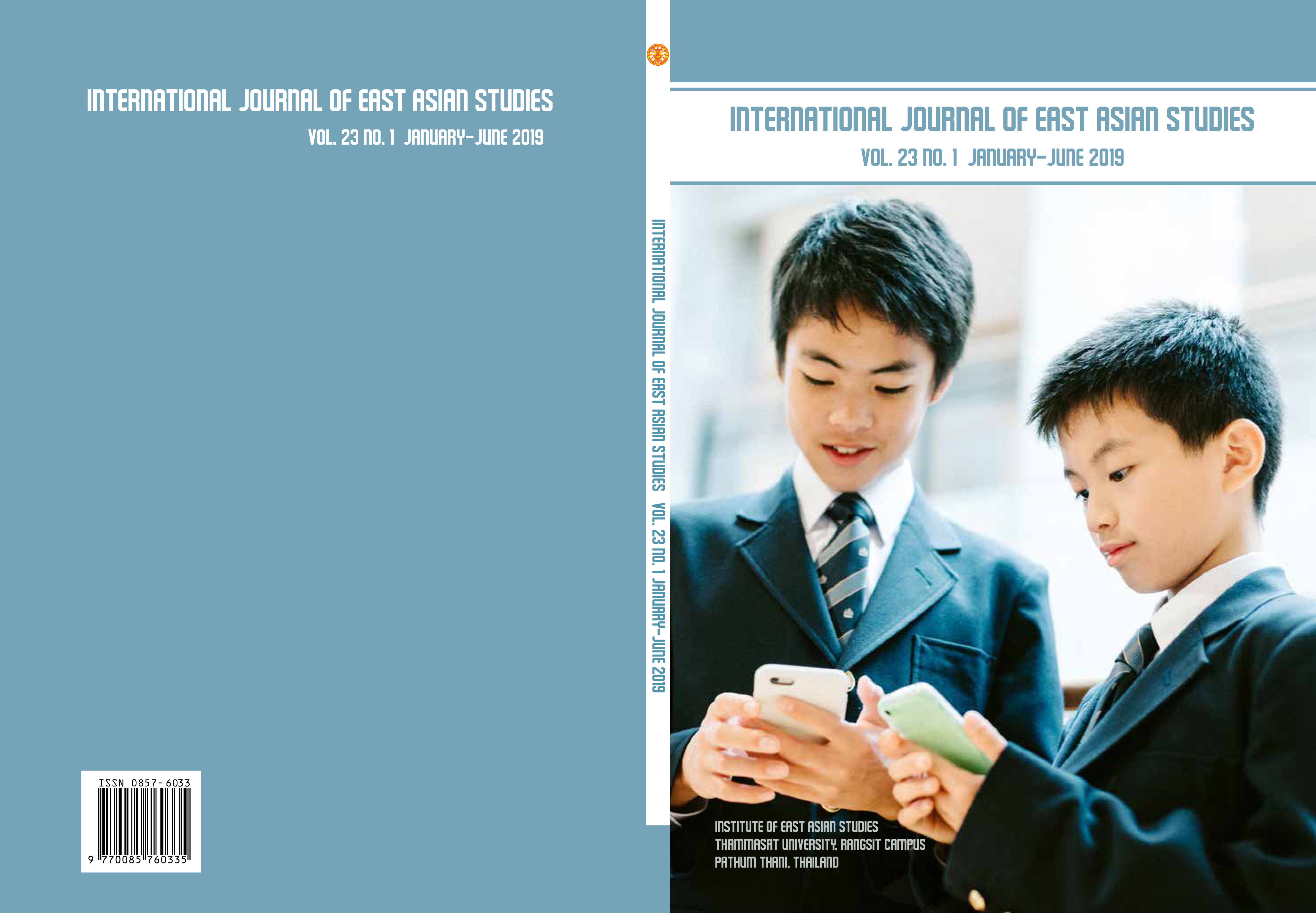University Staff's Work Motivation: Do Personal Factors Make A Difference?
Keywords:
work motivation, personal factor, staff, higher education, VietnamAbstract
This study explores perceptions of university staff toward work motivation, as well as the relationship between perceived personal factor and staff’s work motivation. Questionnaires measuring factors of work motivation were distributed to 71 full-time working staffs of the Vietnam National University Ho Chi Minh City. The empirical results reveal that the levels of work motivation of staff in VNU-HCM are moderately high. The findings of this study also indicated that there were significant differences in work motivation levels in terms of age, length of employment, academic qualification, and income per month.
Downloads
References
Baba Gana, A., & Bababe, F. B. (2011). The effect of motivation workers performance: A case of Maiduguri Flour Mill Ltd, Borno State, Nigeria. Continental Journal of Social Sciences, 4(2), 8-13.
Bedrnová, E., & Nový, I. (2002). Psychologie a sociologie řízení. Praha: Management Press.
Boriban, O., & Chaiyabut, P. (2013). Employee motivation factors that affect job performance of Suan Sunandha Rajabhat university employee. International Scholarly and Scientific Research and Innovation, 8(9), 2950-2953.
Dillman, D. A. (2000). Mail and internet surveys: The tailored design method. New York: John Wiley and Son.
Gonyea, R. M. (2005). Self-reported data in institutional research: Review and recommendations. In P. D. Umbach (Ed.), Survey research: Emerging issues (pp. 73-89). San Francisco, CA: Jossey-Bass.
Hair, J. F., Tatham, R.L., Anderson, R.E., Black, W. (2009). Multivariate data analysis (6 ed.). Upper Saddle River, NJ: Prentice Hall
Hauser, L. (2014). Work motivation in organizational behavior. Economics, Management, and Financial Markets, 4, 239-246.
Kadence, B. (2006). Job performance and satisfaction. Retrieved from https://ezinearticles.com/?Job-Performance-and-Satisfaction&id=290072
Khalid, Z., Humera, J., Sajjad, H. N., & Syed, S. (2011). Relationship between Rewards and Employees Motivation in the Non-Profit Organizations of Pakistan (1st ed.). Retrieved from https://saycocorporativo.com/saycoUK/BIJ/journal/Vol4No2/Article_11.pdf
Kljajić-Dervić, M., & Dervić, S. (2017). Successful leadership and motivation lead to employee satisfaction. Paper presented at the Management International Conference, Venice, Italy.
Kwapong, L. S. A., Opoku, E., & Donyina, F. (2015). The effect of motivation on the performance of teaching staff in Ghanaian polytechnics: The moderating role of education and research experience. Global Journal of Human Resource Management, 3(6), 30-43
Malaney, G. D. (2002). You still need high response rates with web-based surveys. Student Affairs On-Line, 3(1).
Nunnally, J. C., & Bernstein, I. H. (1994). Psychometric theory (2nd ed.). New York, NY: McGraw-Hill.
Page, L. (2008). Do not show me the money? The growing popularity of non-monetary incentives in the workplace. American Journal of Economics, 93-96.
Re’em, Y. (2010). Motivating public sector employees: An application-oriented analysis of possibilities and practical Tools. (Unpublished master's thesis). Hertie School of Governance, Germany.
Robbins, S. P., & Judge, T. A. (2016). Essentials of organizational behavior (13th ed.). Pearson.
Shaheen, I., Sajid, M. A., & Batool, Q. (2013). Factors affecting the motivation of academic staff. International Journal of Business and Management Invention, 2(1), 105-112.
Shrum. L. J. (2007). The implications of survey method for measuring cultivation effects. Human Communication Research, 33(1), 64-80
Stamov-Roßnagel C. (2015). Work Motivation and Aging. In Pachana N. (eds), Encyclopedia of Geropsychology. Springer, Singapore
Sylvestre, M., He H. Y., Zhao, Y. Y., & Shan J. F. (2017). Factors and levels associated with lecturers’ motivation and job satisfaction in a Chinese university. EURASIA Journal of Mathematics Science and Technology Education, 13(10), 6415-6430.
Syed, S., Raza, J. A., Jabran, A., Ejaz, W., Ul-Haq, I., & Syed, N. R. (2011). Workload and performance of employees. Interdisciplinary Journal of Contemporary Research Business, 3(5), 256-258.
Tran, V. H. (2016). Factors influencing staffs’ work motivation in the Department of Labor Invalids and Social Affairs in Nam Dinh Provide. (Unpublished masters’ thesis). University of Labour and Social Affairs, Vietnam.
Tremblay, M. A., Blanchard, M. C., Taylor, S., Pelletier, L. G., & Villeneuve, M. (2009). Work extrinsic and intrinsic motivation scale: Its value for organizational psychology research. Canadian Journal of Behavioural Science, 41(4), 213–226.
Towers, D. (2006). An investigation whether organisational culture is directly linked to motivation and performance trough looking at Google Inc. The Birmingham business school, 1(1),1-31.
Ufuophu-Biri, E., & Iwu, C. G. (2014). Job motivation, job performance and gender relations in the broadcast sector in Nigeria. Mediterranean Journal of Social Sciences, 5(16), 191-198
Victor, A. A., & Babatunde, E. G. (2014). Motivation and effective performance of academic staff in higher education: Case Study of Adekunle Ajasin University, Ondo State, Nigeria. International Journal of Innovation and Research in Educational Sciences, 1(2), 2349–5219
VNU-HCM (Vietnam National University Ho Chi Minh City). (2017). Annual report 2017. Ho Chi Minh: VNU-HCM Press.
Zámečník, R. (2014). The measurement of employee motivation by using multi-factor statistical analysis. Procedia - Social and Behavioral Sciences, 109, 851 – 857
Zhou, Y., & Volkwein, J. F. (2003). The influences on faculty departure in two-year colleges: A national study using NSOPF-99. Paper presented at the Association for the Study of Higher Education (ASHE) Conference, Portland.



